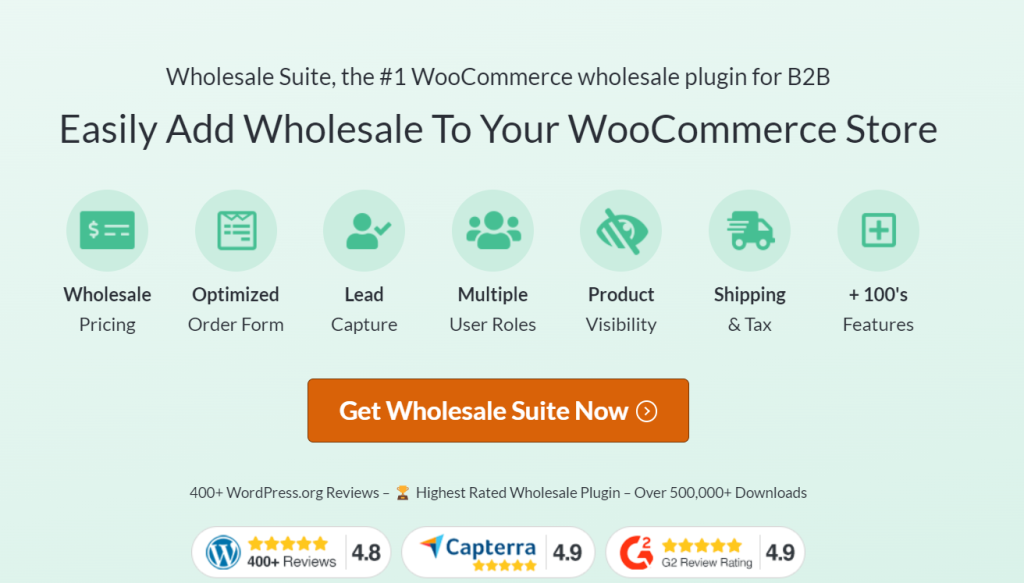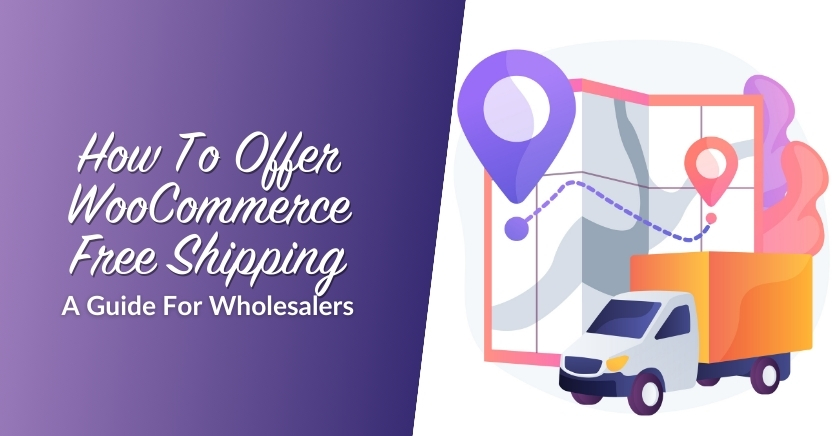Business Risk Mitigation: How To Protect Your Wholesale Business


The business landscape is always changing and evolving. As a wholesaler in a dynamic industry, your journey is often marked by several challenges and uncertainties – from supply chain disruptions to market changes and disruptive technologies. The key to thriving lies in implementing effective business risk mitigation strategies.
Neglecting to address these challenges can impact your business operations, long-term success, and profitability. No worries, we’re here to help out! In this comprehensive guide, we’ve enumerated some of the top risks in the wholesale sector and offer actionable recommendations to help you safeguard your business.
So, without further ado, let’s dive right in!
Wholesale Business Risk Mitigation: Challenges And Solutions
Understanding key risks in the business landscape can help wholesalers like you effectively navigate them and thrive in a competitive market. Below, we unveil core challenges often faced by wholesale businesses and offer practical business risk mitigation strategies.
1. Challenge: Supply chain disruptions
Wholesale businesses play an important role in the business landscape, helping retail businesses make their products available to their customers. However, the global marketplace is a dynamic ecosystem, and unpredictable shifts can impact your operations. Factors such as natural disasters, unexpected shifts in customer demand, or geopolitical concerns can affect the supply chain, causing delays and disruptions.
According to Statista, the cost of supply chain disruptions averages $184 million annually for businesses worldwide. While this is the case, only 6% of companies report having full visibility of their supply chain, as revealed by another industry report. These statistics highlight missed opportunities to reduce costs and make your wholesale operations more efficient and resilient.

Solution: Diversifying your suppliers
Before anything else, it’s crucial to conduct a thorough assessment of your current supply chain first. Assess supplier relationships, identify bottlenecks and vulnerable points, and review historical patterns of previous supply chain disruptions. This assessment will provide you with a solid foundation to improve your business’ resilience.
Then, armed with these insights, begin the process of diversifying your supply chain network. Embracing supplier diversification means expanding your relationships with multiple suppliers. This business risk mitigation strategy allows you to prevent the risk of a single point of fallout in your supply chain, which then enhances your ability to adapt to unforeseen challenges.
Here are some additional considerations:
- Evaluate your suppliers: Know their production capabilities, financial stability, and geographical location. Having a diverse set of suppliers across different regions can minimize the impact of localized disruptions.
- Negotiate better terms: This process also opens opportunities for negotiation. With multiple options, you can leverage bargaining power to negotiate better terms, pricing structures, and payment schedules.
- Monitor continuously: You’ll also want to set regular assessments of supplier networks and adjust your business risk mitigation strategy as your business needs evolve.
2. Challenge: Technological obsolescence
The wholesale sector is continuously being transformed by technology. E-commerce integration, automation, and data analytics are just some of the key technologies being embraced by the industry. According to Forrester, US B2B E-commerce alone is predicted to reach a staggering $3 Trillion by 2027.
However, wholesale businesses that fail to keep pace with rapid technological and e-commerce adoption are at risk of falling behind. Neglecting to integrate these advancements can affect your ability to meet evolving customer expectations, which can hurt the long-term success of your business.
Solution: Continuous technological adoption
This business risk mitigation strategy also starts with assessment. Before investing in tools and technologies, start with a thorough audit of your current technological infrastructure. Identify outdated systems and processes that can be hindering your business efficiency. Next, prioritize implementing new technologies on the aspects with the most impact on your operational efficiency, customer experience, or overarching business goals.
For instance, let’s say your wholesale business has been relying on traditional paper-based order processing. Your assessment may reveal that this process is resulting in errors and delays in order fulfilment, which are dissatisfying your customers. In response to this assessment, you’ll need to prioritize technological upgrades that optimize order processes, such as implementing a digital ordering system.
As you move through this process, consider the feedback of your existing clientele. Their valuable insights can help you identify areas ripe for improvement. Moreover, you’ll need to keep a keen eye on emerging industry trends. Regularly read industry publications and attend industry events to stay informed.
Wholesale Suite

One of the most common hindrances to growth for wholesale businesses is the challenge of transitioning their operations online. Implementing solutions like Wholesale Suite allows you to facilitate a seamless transition to the e-commerce landscape. This all-in-one solution for WooCommerce features three key plugins:
- Wholesale Prices Premium allows you to manage wholesale pricing seamlessly. With this powerful plugin, you can set tiered pricing for your wholesale customers, implement bulk discounts, and order minimums, tweak product visibility, and more!
- With Wholesale Order Form, you can create a one-paged, user-friendly order form that streamlines the ordering process for your valued customers.
- Wholesale Lead Capture enables you to create an intuitive wholesale registration form so you can capture B2B leads seamlessly. This plugin also allows you to automate approval processes, send welcome emails, and ensure a smooth onboarding process.
3. Challenge: Cyber security threats
As industries continue to shift their operations digitally, cybersecurity has become a top concern for wholesalers. The increasing dependence on technology makes businesses more vulnerable to data breaches, ransomware, and other forms of cybercrime. In fact, according to industry insights, cybercrime will cost businesses an estimated $10.5 trillion annually by 2025. So, how can you protect your wholesale business in this kind of landscape?
Solution: Adopt a proactive approach to cybersecurity
The key to safeguarding your business against cybercrime is by adopting a proactive approach to cybersecurity. This means implementing measures to safeguard your digital assets and customer data even before potential threats emerge. As part of your business risk mitigation strategy, consider adopting the following practices against cybercrime:
- Schedule regular security audits: Regular audits can help you identify vulnerabilities, outdated security systems, and rooms for improvement.
- Implement multiple security measures: Some common measures include firewalls, anti-virus software, and detection systems. It is also crucial to update your systems and software regularly.
- Educate your team: 82% of cybercrime involves the human element, including errors and susceptibility to social engineering tactics. To avoid this, make sure to educate your team (and your customers) about the best practices for online security. This includes basics on using strong passwords and identifying phishing attempts.
- Create an incident response plan: Your wholesale business should also have a plan in place to mitigate the potential impact of a cyber security incident. This plan should also include legal actions, steps for system recovery, and communication strategies to stakeholders.
4. Challenge: Customer demand fluctuations
Another risk wholesalers face in today’s unpredictable market is shifts in customer demand. This is even more crucial for wholesale businesses, given the scale of goods involved in each transaction. Depending on the nature of your business, market trends, seasonality, and other external factors can introduce volatility in customer demand. In turn, this can impact your inventory management, profitability, and overall business stability.

Solution: Leverage market insights and invest in inventory management
Business risk mitigation strategies that focus on foresight and flexibility can help your wholesale business mitigate the impact of customer demand fluctuations. This includes leveraging the power of data analytics and historical sales data. Insights from these sources will help your business understand demand fluctuations and anticipate trends so you can align your inventory levels accordingly.
You’ll also have to fully understand the nature of your offerings. For example, if your products are impacted by climate changes, seasonal holidays, or industry-specific cycles, you’ll have to create a plan to capitalize on peak demand periods. Contrarily, you’ll need to create contingency plans for seasons with less demand.
Here are further actionable strategies you can consider:
- Diversify your product portfolio: Tailor your offerings to cater to a range of diverse customer needs by introducing complementary products to your current lineup. For example, if you sell outdoor recreational equipment, you can also consider wholesaling related products like outdoor apparel, accessories, or camping gear. This helps ensure your wholesale business won’t be overly reliant on a specific product category, which can mitigate the impact of demand fluctuations for other items.
- Invest in inventory management systems: Likewise, you can invest in advanced inventory management systems that offer real-time tracking of goods and inventory. This can help your business be more agile when changes in demand occur, preventing shortages and overstocks.
- Nurture supplier relationships: You’ll also want to collaborate and foster good relationships with your suppliers. This entails creating mutually beneficial agreements, which opens opportunities to form strategic partnerships with your network.
- Implement strategic marketing initiatives: You can create demand on low-peak seasons by launching targeted marketing campaigns. For example, you can run special promotions, coupons, or discounts to maintain a steady flow of orders.
Conclusion
To navigate through today’s ever-changing business landscape, your wholesale business must adopt a proactive approach to business risk mitigation. Throughout this article, we’ve explored key challenges wholesalers face and outlined key mitigation strategies to help your business stay ahead of the curve.
To conclude, let’s summarize the challenges and solutions below:
- Diversify your supplier network.
- Regularly assess vulnerabilities and historical patterns.
- Conduct a thorough audit of your current technological infrastructure.
- Prioritize technological upgrades aligned with business goals.
- Adopt a proactive cybersecurity approach.
- Conduct regular security audits and educate your team.
4. Customer demand fluctuations
- Leverage data analytics and historical sales data.
- Invest in advanced inventory management systems.
- Foster strategic relationships with suppliers.
In your goals to enhance business risk mitigation, consider integrating solutions that help you seamlessly adapt to the digital era. Wholesale Suite– the #1 WooCommerce B2B plugin, allows you to take your entire wholesale operations online. This all-in-one solution allows you to manage wholesale pricing, create seamless order forms, and capture B2B leads effortlessly with user-friendly forms.
Do you have other questions about wholesale business risk mitigation? Let us know in the comments section below!
The post Business Risk Mitigation: How To Protect Your Wholesale Business appeared first on Wholesale Suite.











